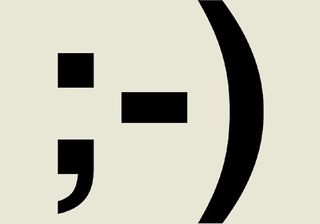Happy Birthday to the smiley face
The humble emoticon, which has spawned a multitude of different varieties and meanings in email and instant messaging, is 25 years old today.

Today signifies the birthdays of many celebrities, Jimmy Fallon, Joan Lunden, and Adam West to name a few, but today each of these stars will share the limelight of 19 September with :-) for its Silver Anniversary.
That's right, 25 years ago today the emoticon, better known as :-), was brought into the world via a Carnegie Melon University online message board by Professor Scott Falhman.
The story begins during the infancy of the internet on a university 'bboard' where students, faculty and staff at Carnegie Melon could come together to thrash out the issues of the day. A number of these postings contained attempts at humour, but lacked the body language and voice tones to properly bring the comedy across. Then, a shining, albeit simple, answer came to Fahlman in the form of a colon, hyphen and parenthesis.
His original idea was to place a :-) after humorous posts and a :-( after text meant to be taken seriously, however the "frowning" emoticon rapidly evolved to indicate anger or displeasure. Not long after the initial emoticon was branded onto the backside of the internet, a multitude of other emotions and sentiments were being put into cyber-form. The winking, angry, and laughing emoticons are all variations of Fahlman's masterpiece that each of us have seen more than we care to admit.
It didn't take long before Prof Fahlam's recently unveiled "smiley" had expanded beyond the borders of Pittsburgh's Carnegie Melon's campus. The university's alum who still frequented the board began to imprint the character in their own daily lives all around the US, and as the internet caught on world-wide the :-) was able to cross language barriers all around the globe.
The critics of emoticons maintain that it has destroyed the fabric of proper writing, believing a functioning literary mind should be able to express emotion without the use of a direct symbol explaining to the reader exactly how he or she should feel. But to answer these critics, is it really that serious of a debate? A simple :-) here or a :-( there is a simple way to avoid an unintentional row, and that's something everyone can :-) about.
Get the ITPro. daily newsletter
Receive our latest news, industry updates, featured resources and more. Sign up today to receive our FREE report on AI cyber crime & security - newly updated for 2024.




